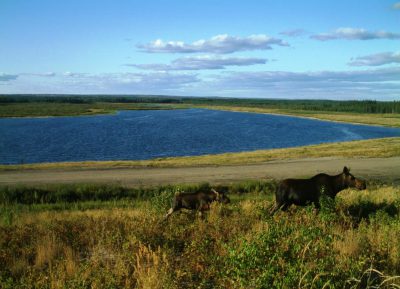Jackpine Compensation Lake Monitoring Program
Client
Shell Canada Energy
Location
Fort McMurray, Alberta
Project Duration
January 2013 – ongoing
Background
Jackpine Lake was constructed to replace aquatic habitats that are within the footprint of the Jackpine Mine Project, which is owned and operated by Canadian Natural Resources Limited. The lake covers a total area of 47.3 hectares and consists of three distinct areas: a north basin with a maximum depth of about 7 m, a shallow interconnecting narrows region, and a larger, deeper south basin with a maximum depth of about 11 m. The lake was designed to support year-round fish populations, and to provide fish passage between Muskeg River and Muskeg Creek.
The focus of the Jackpine Compensation Lake Monitoring Program is to track the quality and trajectory of habitat created and measure key population metrics of the fish species that occupy the lake. Ultimately, these results will be used to confirm whether the compensation requirements of the Project Authorization have been achieved to the satisfaction of DFO. Data collections on colonization rates, reproductive success, species composition, and the physical and chemical attributes of compensation habitats are oriented at documenting the “health” of various ecosystem components, to better understand why fish populations are responding as observed.
Services Provided
A five-year monitoring program was prepared by Hatfield and approved by DFO following final lake commissioning in the spring of 2010. The Jackpine Lake Monitoring Plan was implemented from 2010 to 2015 using a phased study design. The first phase included monitoring of physical and chemical habitat components, the second phase added monitoring of early colonizing species like plankton, insects, and plants, and the third phase added monitoring of fish populations. Surveillance monitoring of habitat quality and fish health has been ongoing since the completion of the five-year monitoring commitment. These surveillance programs have focused on tracking key indicators of aquatic health, including assessments of the quality and potential toxicity of lake sediments and mercury testing in fish tissues, with the goal of confirming the long-term sustainability of the lake.
Hatfield was responsible for the project administration, adaptive management initiatives, field data collections, and annual reporting for the Jackpine Compensation Lake Monitoring Program from 2010 through 2018.
